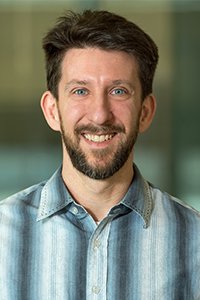
Ryan S. Elliott
Professor & Director of Graduate Studies

Professor & Director of Graduate Studies
Professor & Director of Graduate Studies
Research Lab | UMN Experts Page
Professor Ryan S. Elliot's research deals with stability and instability problems related to structures, materials, and microstructured materials. This broad area of engineering science encompasses phenomena such as the crumpling of a car body and frame when involved in a crash, the buckling of railroad tracks on extremely hot and sunny days, the flutter of aircraft wings (where flapping-like vibrations can be amplified and ultimately rip the wings or tail fins off the craft), and the instabilities that can lead to collapse of space truss and frame structures commonly used in satellites and space station construction. Professor Elliott's research program has three major themes: (I) development of nonlinear modeling of discrete and continuum solid-state materials and structures, capable of accurately predicting instability behavior and the associated multiple stable states of real systems; (II) development of analytical and computational methodologies (based on theories of symmetry, bifurcation, and pattern formation) that combine applied mathematics and scientific computing to systematically discover the multiple stable states predicted by a given nonlinear model; and (III) development of open source scientific software, and the creation and support of user communities who benefit from these software packages. The specific research projects pursued by Professor Elliott and his research group each involve one or more of these major themes which serve as common threads connecting them all.
Ph.D., Aerospace Engineering and Scientific Computing, University of Michigan, 2004
M.S., Mathematics, University of Michigan, 2002
M.S.E., Aerospace Engineering, University of Michigan, 1999
B.S., Engineering Mechanics, Michigan State University, 1998
Director of Graduate Studies, Aerospace Engineering & Mechanics, University of Minnesota, 2020 -present
Professor, Aerospace Engineering & Mechanics, University of Minnesota, 2018
Associate Professor, Aerospace Engineering & Mechanics, University of Minnesota, 2011-2018
Russell J. Penrose Fellow, Aerospace Engineering & Mechanics, University of Minnesota, 2012-2015
Graduate Faculty Member, Computational Science, 2015-present
Graduate Faculty Member, Civil Engineering, 2012-present
Visiting Researcher (LMS), École Polytechnique (France)
Assistant Professor, Aerospace Engineering & Mechanics, 2005-2011
Research Fellow, Department of Aerospace Engineering, University of Michigan, 2004
Computational Science Graduate Fellowship Practicum, Los Alamos National Laboratory, 2001
Research Assistant, University of Michigan, 1999-2004
Teaching Assistant, University of Michigan, 1999
Undergraduate Teaching Assistant, Michigan State University, 1997-1998